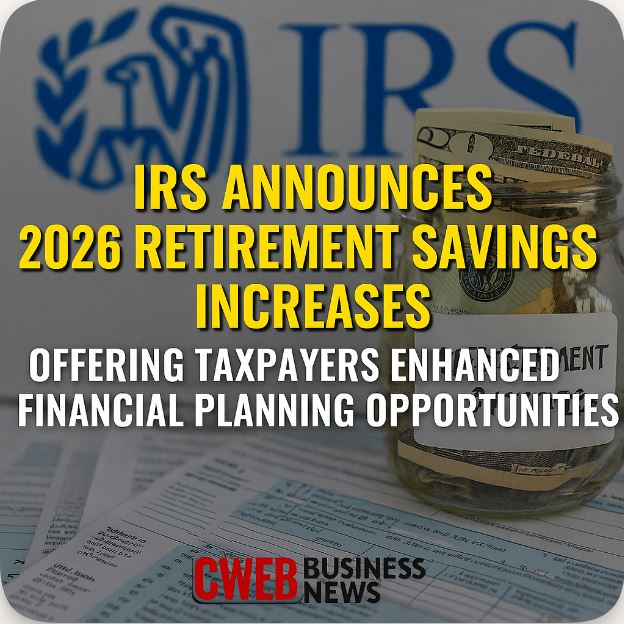
The Internal Revenue Service has released its highly anticipated cost-of-living adjustments for retirement plans for the 2026 tax year, providing a clear financial roadmap for millions of American savers.
These annual updates, detailed in IRS Notice 2025-67, reflect inflationary trends and create new opportunities for individuals to bolster their long-term financial security through increased contribution ceilings across a wide array of savings vehicles.
For workers participating in 401(k), 403(b), and most 457 plans, the elective deferral limit will see a significant boost to $24,500 in 2026, a $1,000 increase from the current 2025 limit.
This change directly impacts the core retirement accounts for a vast portion of the workforce, allowing for greater pre-tax savings. Similarly, the contribution limit for both traditional and Roth IRAs will rise to $7,500, up from $7,000, offering individuals greater flexibility in managing their retirement portfolios.
A critical focus of the announcement involves enhanced catch-up contribution provisions, which are particularly impactful for older savers. For participants aged 50 and over in 401(k) and similar workplace plans, the standard catch-up limit will increase to $8,000.
This adjustment means that eligible employees in this age group can contribute a total of up to $32,500 to their plans in 2026. Furthermore, the IRS has confirmed the continued application of a special higher catch-up limit of $11,250 for employees aged 60 through 63, a provision established under the SECURE 2.0 Act, providing a substantial savings accelerator for those nearing retirement.
The announcement also detailed important changes to income phase-out ranges that dictate eligibility for certain tax advantages. The income thresholds for making deductible contributions to traditional IRAs and for contributing directly to Roth IRAs have been raised across various filing statuses.
For instance, the phase-out range for single taxpayers covered by a workplace retirement plan will increase to between $81,000 and $91,000. These adjustments mean more individuals and couples will qualify to make full or partial contributions to these popular accounts.
The IRS also confirmed an increase to $150,000 in the compensation level that triggers a new SECURE 2.0 Act requirement for high-income earners to make their catch-up contributions as designated Roth contributions.
Beyond individual account limits, the IRS increased several other key figures for 2026. The annual compensation limit used for various plan tests rises to $360,000, and the defined benefit plan annual benefit limit increases to $290,000.
These comprehensive updates provide essential guidance for both individual taxpayers and employers, enabling more effective and strategic retirement planning for the coming year.
Visit the IRS for 2026 Amounts Relating to Retirement Plans and IRAs, as Adjusted for Changes in Cost-of-Living



